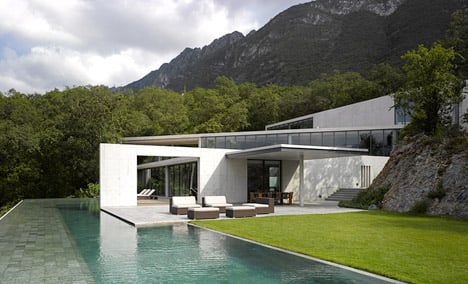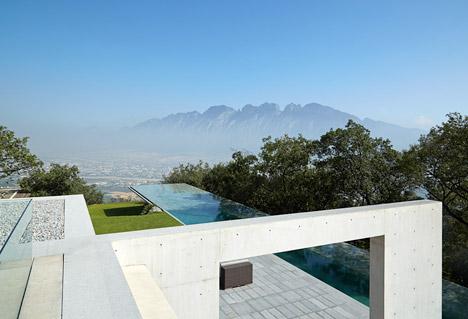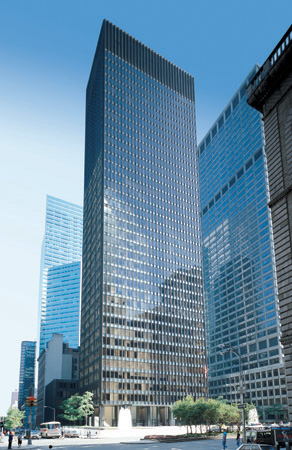Being someone who has always been interested in design, walking around New York City is the gift that keeps on giving. Seeing all the different architectural styles the city has to offer is something to marvel. It amazes me that on one block, you see a very ornate, intricate, heavily decorated building like the St. Patrick’s Cathedral and the next could be a more modern structure like the Seagram building. After comparing all of the different designs, you naturally start to form your own opinion about what is your favorite style and discover which type “speaks to you most.” For me, it is the minimalist styled homes that always catch my eye and gets my greatest sense of appreciation.
Seagram Building, Mies van de Rohe St. Patrick's Cathedral, James Renwick Jr.
Architecture is about function, form, and beauty. The beauty of minimalism, I believe, lies in how the structure represents a sense of order and purity. Minimalism is a design philosophy that embraces the “less is more” mentality (as German architect Mies van de Rohe would say.) Mies van de Rohe created works often referred to as “skin-and bones architecture,” designs that are reduced or stripped down to the bare minimum of elements. When architects create buildings like this, every element they include has a purpose. A few characteristics classified as minimalist are:- Simple, clean, open spatial arrangements
- Pure proportions, basic geometric forms absent from ornamentation or decoration
- Clever uses of textures and harmonious colors
- Natural lighting, large windows, flat roofs
I believe that simplicity is elegant and something that goes hand in hand with minimalism. This idea of simplicity stems from the Japanese culture and Zen Philosophy. It is important that when designing, architects should implement materials in meaningful and logical ways. Japanese architect Tadao Ando for instance is famous for his complex structures despite their simple appearance.
Ando’s Casa Monterrey in Mexico is a great example of design materials precisely placed to highlight where the eye concentrates. For Casa Monterrey Ando used various horizontal and vertical plains emerging from the landscape to highlight the Sierra Las Mitras Mountains. The inside of the home includes a large, open living space, ample natural lighting, and clean finishes.

Casa Monterrey, Tadao Ando
I love minimalism because it is like an attitude towards life. Why add on elements you don’t need? When I look at a building that evokes minimalism, I applaud the architect for being brave enough to show restraint and to allow the building to stand on its own beauty.
Citations
- "5 Characteristics of Modern Minimalist House Designs." YR Architecture + Design. N.p., 28 Feb. 2017. Web. 29 Apr. 2017.
- Evan Rawn. "Material Masters: Glass is More with Mies van der Rohe" 03 Dec 2014. ArchDaily. Accessed 29 Apr 2017. <http://www.archdaily.com/574575/material-masters-glass-is-more-with-mies-van-der-rohe/>
- Source: Boundless. "Minimalism." Boundless Art History Boundless, Retrieved 29 Apr. 2017 from https://www.boundless.com/art-history/textbooks/boundless-art-history-textbook/global-art-since-1950-ce-37/dematerialization-235/minimalism-834-10851/
- Frearson, Amy. "Tadao Ando's Casa Monterrey Nestles against a Hillside in Monterrey." Dezeen. N.p., 19 May 2014. Web. 29 Apr. 2017. Photography by Edmund Sumner
- Ivanoff, Ada. "Design Minimalism: What, Why & How. — SitePoint." SitePoint. SitePoint, 12 June 2014. Web. 29 Apr. 2017.
- Widewalls. "The Inspiring Simplicity of Minimalism in Art, Architecture and Design." WideWalls. Urban and Contemporary Art Resource, n.d. Web. 29 Apr. 2017.



No comments:
Post a Comment